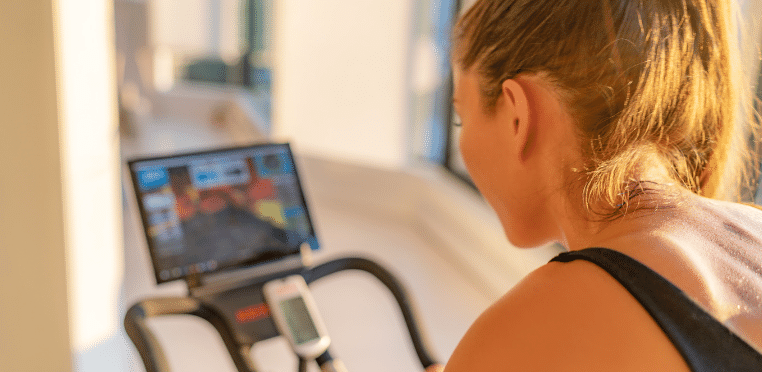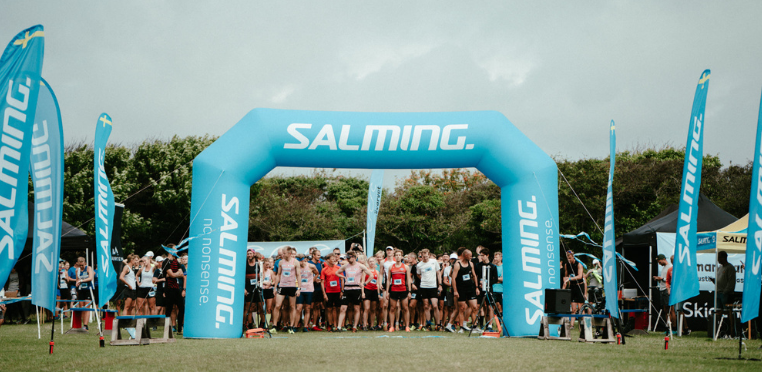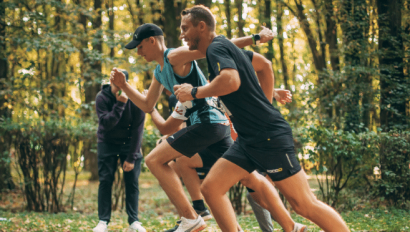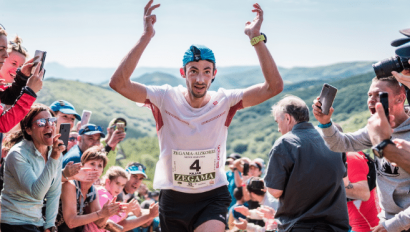The Future of Races: Virtual and Augmented Reality

This is part two of our conversation with Nicklas Tingström, CTO of RaceID. You can find part one, about the future of race timing and GPS, right here.
In this second part of the interview, Nicklas gives us his predictions for the future of virtual reality in racing, and just how far technology and new wearables can take us on the race journey. Read on and get inspired.
Alright, now if we’re getting into more of the virtual race category. For example, the Zwift application where you can sit on your bike athome and participate in worldwide competitions. Do you think that people will be willing to participate totally virtually in races in other sports in the future?
Well, I hope I’m wrong here, but I don’t see any other sport really flourishing as much as cycling in the virtual world. Cycling is just perfect for the virtual game because you’re sitting on your trainer regardless.
We also have the ski-erg and treadmills. But still, running is so accessible that I think people would still rather just go outside. Skiing could work, and there have been some examples of this. But I think skiing is too small of a sport to really make it worthwhile for any company like Zwift or any of their competitors to build a 3D world and everything just for skiing.
But for biking, 360 video and 3D glasses are probably the next steps. I could really see that you would wear VR (Virtual Reality) glasses when you compete on your trainer and experience the scenic route as well. You can gamify it as well to make it more interactive.
This type of technology is going to evolve heavily in the future and I’m really excited to be a part of that future.

Is there something particular that you’re extra or most excited about regarding the future of tech within racing?
A dream of mine has always been racing and augmented reality. I’m a bit of a VR (Virtual Reality) nerd. But even with 4K displays, VR in the endurance industry just doesn’t cut it. Perhaps if you are stuck in a boring location and can’t get out temporarily, it would be an alternative. On the other hand, I think augmented reality has an immense future, especially in running.
With new technology such as wearable glasses, you will be able to run in the normal world, but you could be in a simulated event, or virtual event, in real-time for you, happening only inside of your AR glasses. So you’d still be able to interact with the normal world, but you would be able to see runners from the past, your idols or even superman running next to you. Only your imagination is the limit here.
The next step would be to add gamification, through GPX data and a profile, we can take inspiration from the gaming industry. It is a huge industry with microtransactions and skins that kids like in gaming nowadays. Just imagine yourself running as an avatar of Batman or even running against a former version of yourself to try to beat!
I think augmented reality in active sports can make a huge difference, again, we all know what Pokemon Go did to kids sitting at home in 2016. Suddenly everyone was out chasing monsters that are not even there – and getting exercise in.
The possibilities are endless, augmented reality really has a great future and I think it is also something that can bridge the gap in demographics that we are seeing in the endurance racing industry where the average median age is just getting older. We are having a hard time really encouraging young people to take up endurance sports. I think augmented reality can help make it more exciting and inclusive.
So just to summarize everything a little bit, if you can imagine a regular 10K race with maybe a thousand participants held in 20 years, what do you think that would look like for both an organizer and for a participant and perhaps spectators?
I’d have to start talking about the Race Journey.
If you are a beginner and just starting out in the endurance industry, it’s fairly excluding. It is easy to start running, but the threshold to actually do and train for an event is quite high. By using aggregated data in a smart and responsible way, I think we can find new ways to encourage people to embrace the race journey, and also get the help and inspiration they need to overcome obstacles and keep going. Many people need help with the right training, connecting with people on a similar level and staying motivated to exercise toward their goals. We can give them this in a personalized and accessible way through technology.
Social Media companies today are using data in very smart ways that sometimes may not turn out to favor health and well-being. This pushes us towards bad behavior and polarization as this is favored by the algorithms. Our accumulated understanding of how human psychology works has been put into the hands of brilliant engineers and developers, and we just don’t stand a chance against the artificial intelligence feeding us with news, in just that, a newsfeed.
But, it is totally possible to do the opposite. That is what we think – with data handled correctly, we can help people to form good behaviors and habits, like training and racing, and knowing what motivates a person or what causes someone to give up, and help mitigate that by understanding why and present motivation in many different forms to the people in their own unique data-driven race journey.

20 years from now, I think participation is key. So just getting more people to see the upsides of actually doing endurance events. If you would give anyone one remedy for mostly any disease, chances are high that exercise is the cure. If we can just find ways to get more people to see that, more people would exercise and/or race. It might even turn around the supply and demand so that we need more race organizers!
Right now one of the biggest problems for many race organizers is to find enough participants, especially after the pandemic. But imagine a world where people compete for spots because there are not enough of them.
I feel like the endurance racing industry is one of the last industries that has really jumped on this whole software-as-a-service platform revolution. It makes no sense that all the big organizers have their own systems. We believe it’s gonna be one, two or maybe three big platforms that facilitate everything in the future, even if that involves white-label solutions. I believe the systems are going to be much more up to date and, and really assist and help the organizer and save them money so they can focus on actually doing the event. Why should organizers be the best developers in the world?
When you’re looking to be social with your friends, you go to a platform called Facebook. If you’re looking for something around work, you’re going to LinkedIn, you have everything there gathered for you bundled perfectly on demand in that sphere. And when you’re thinking about race and endurance events, you will think RaceID. That’s how I see the future.
Progress in the world doesn’t happen naturally. We didn’t just go to the moon. People worked their asses off for 10 years to get us there. I think Elon Musk said, “we’re not just gonna naturally come to Mars if no one works towards that”. And you can really see that he is the one making things happen. Now, in endurance racing, it is up to us.
Interested in new race tech? Make sure you are subscribed to the Organizer Newsletter so you don’t miss any updates!


